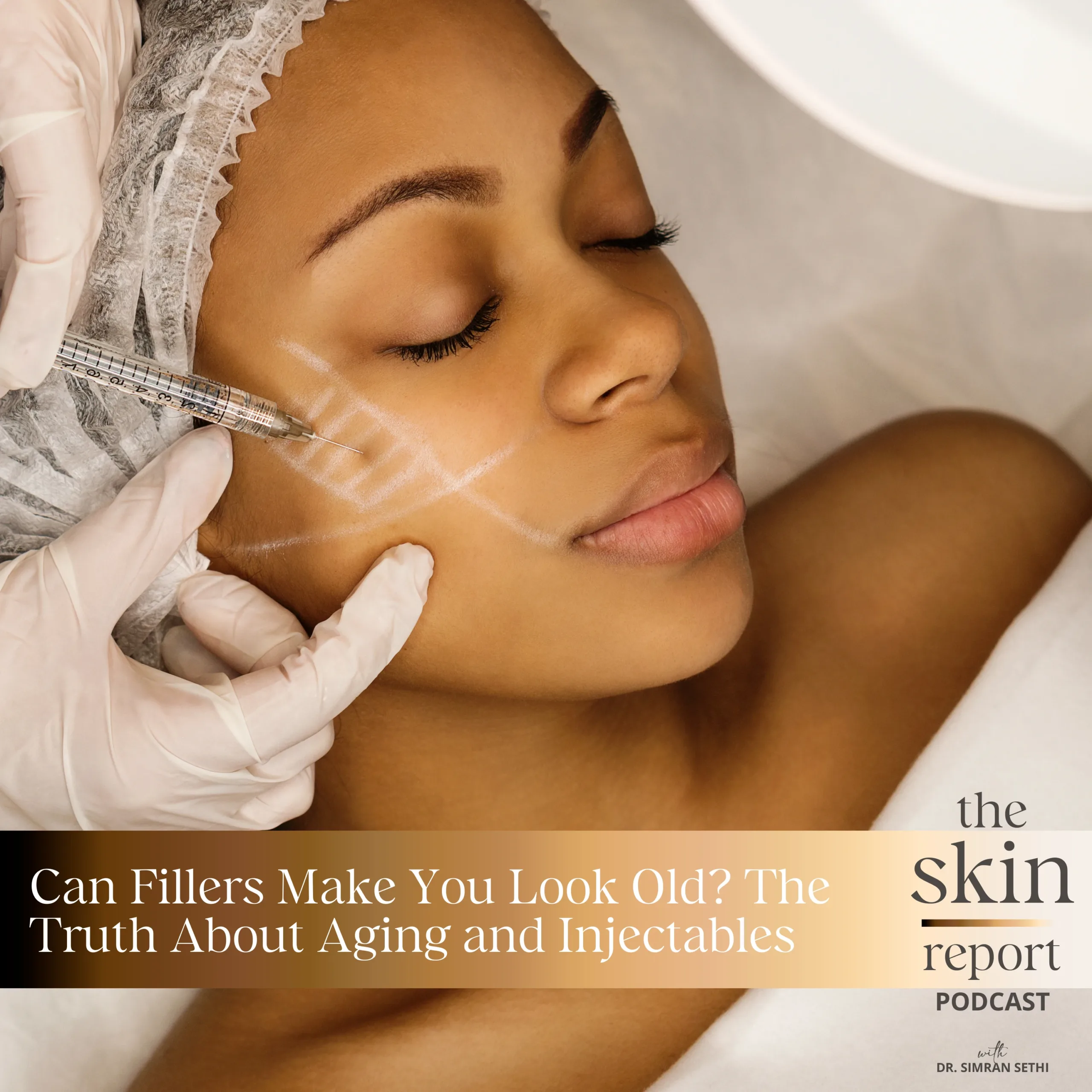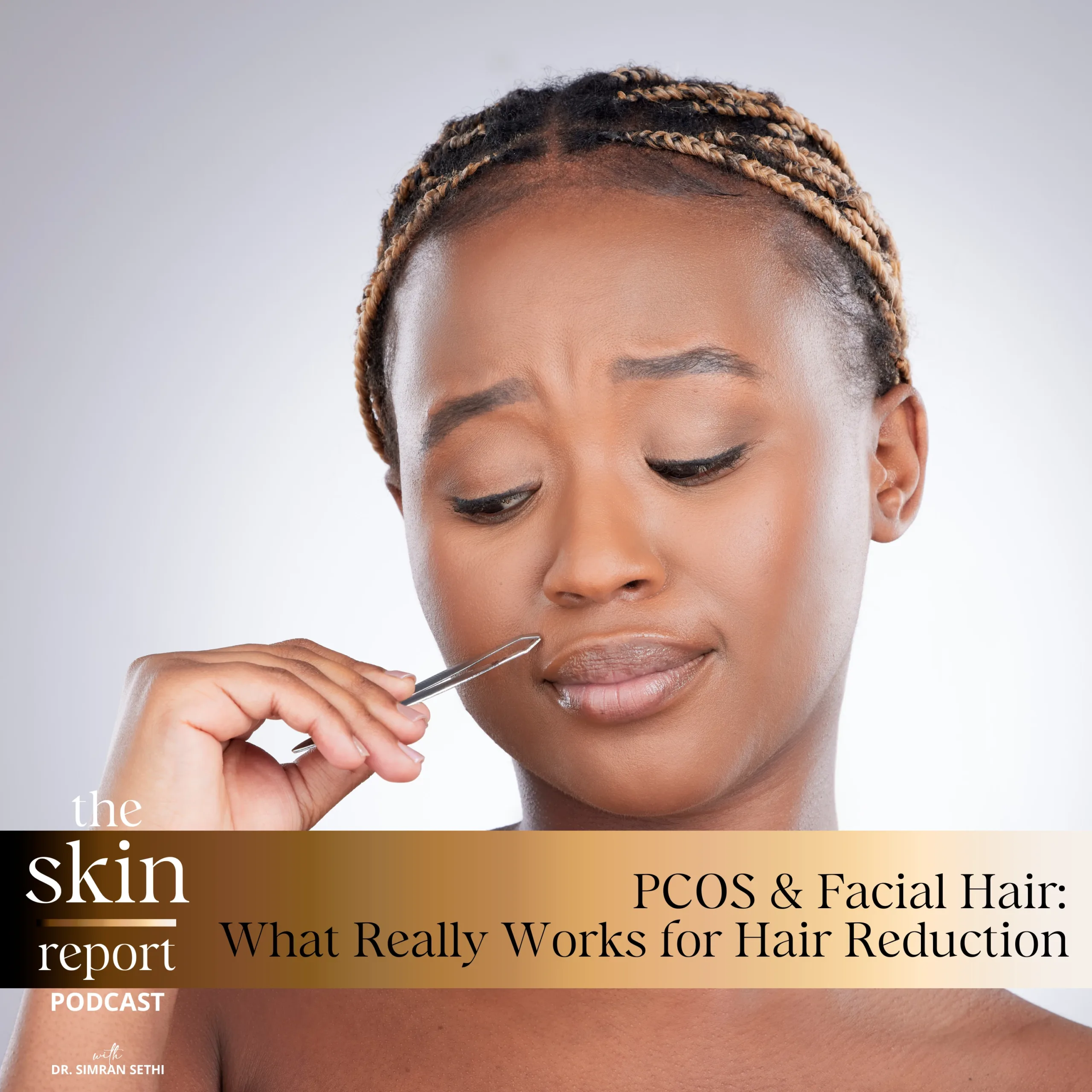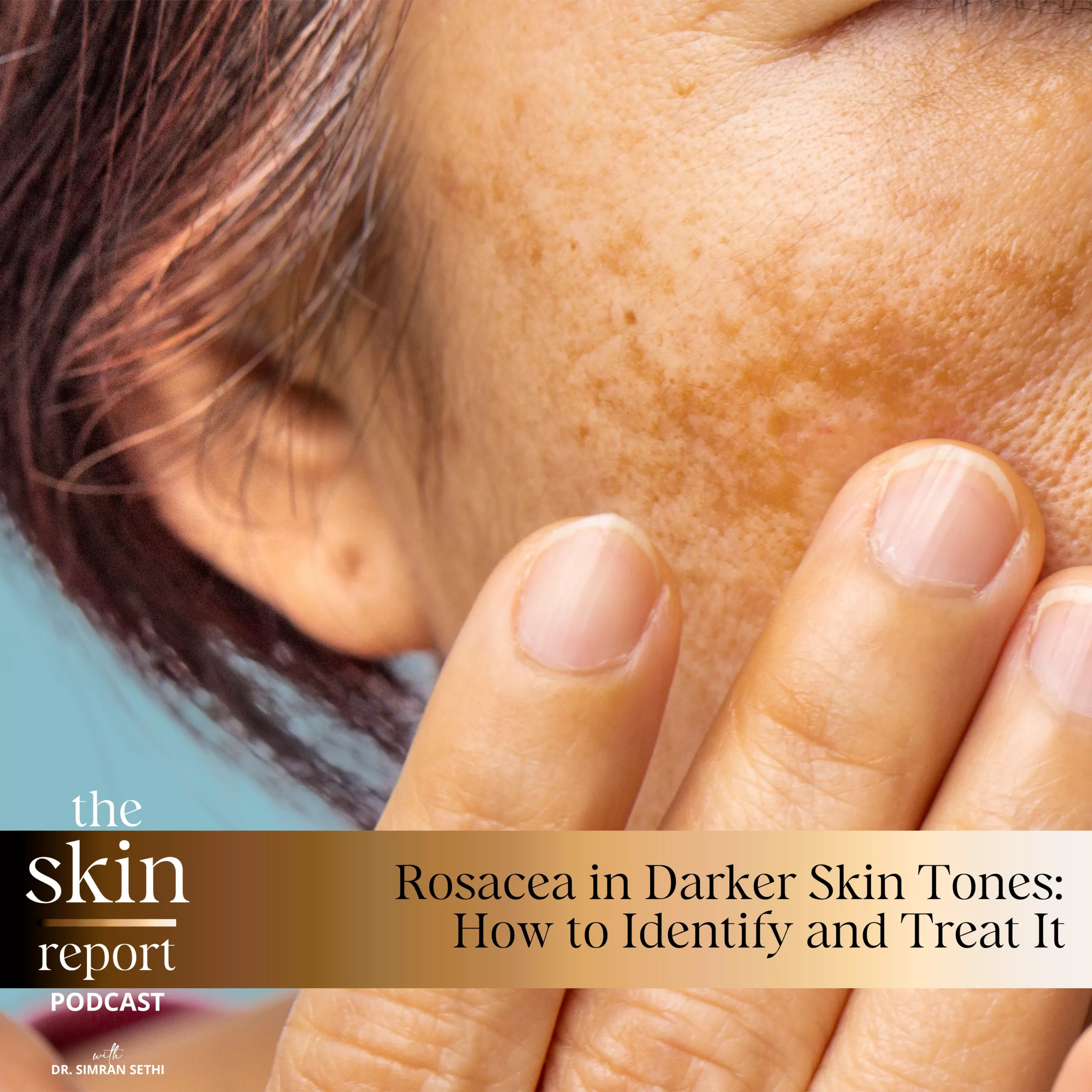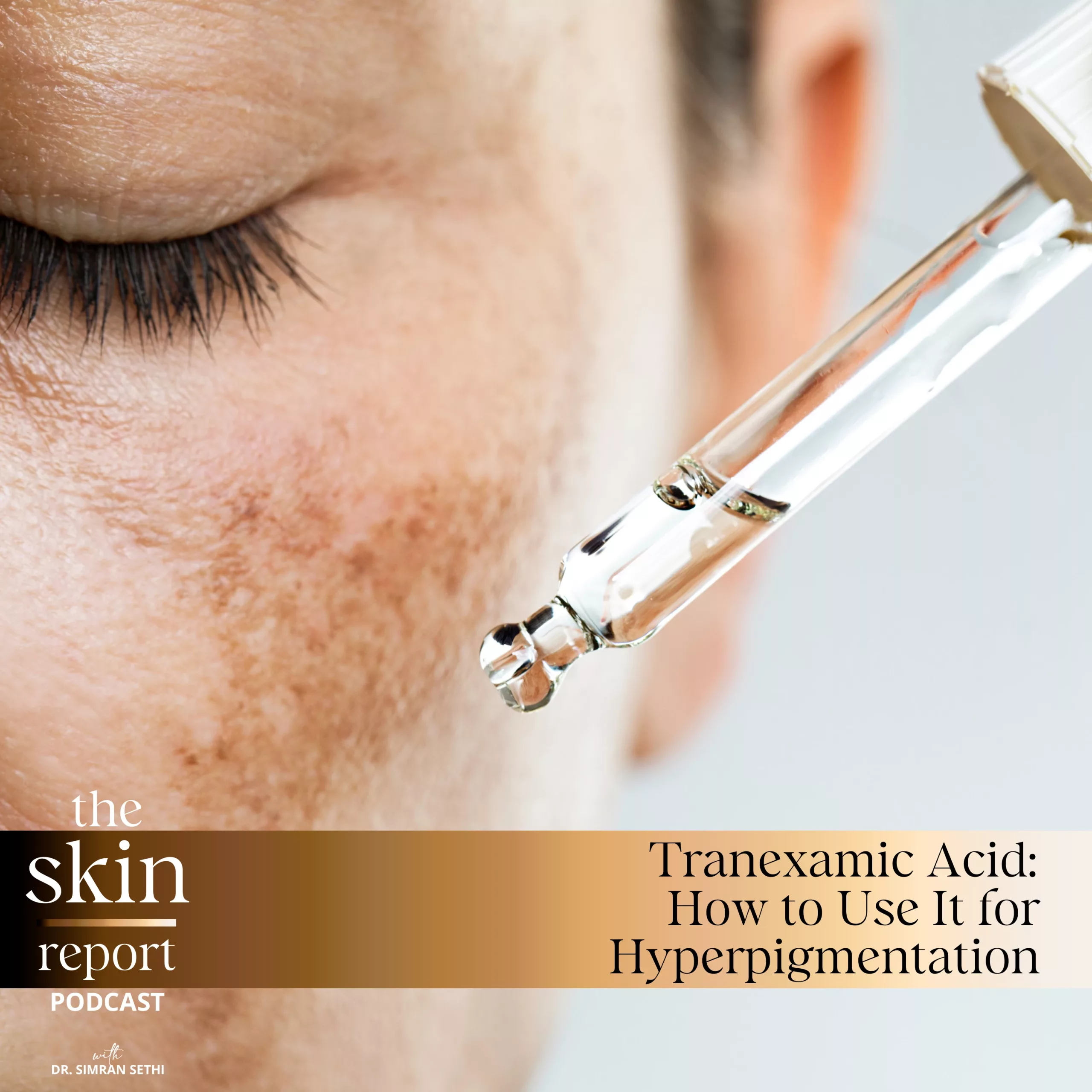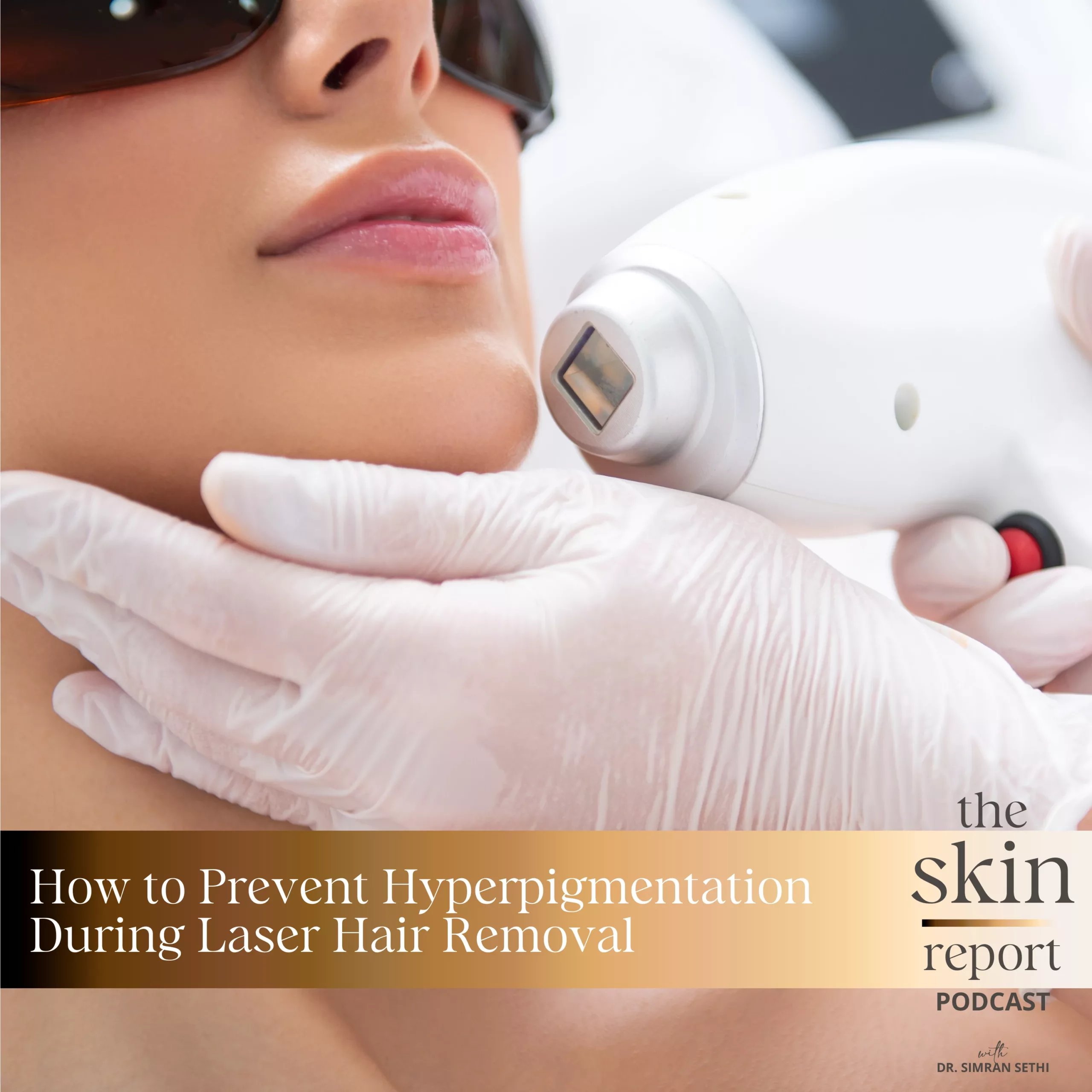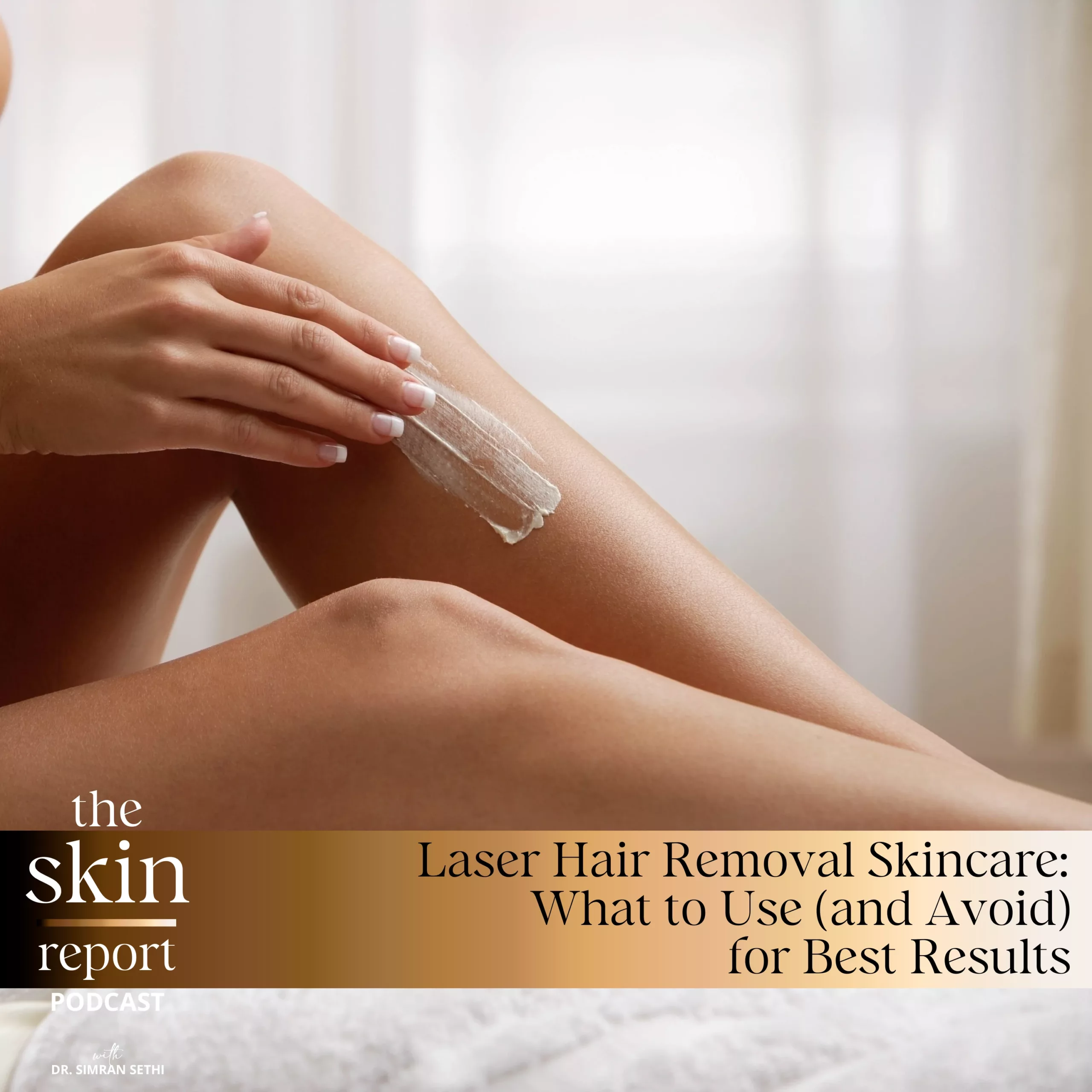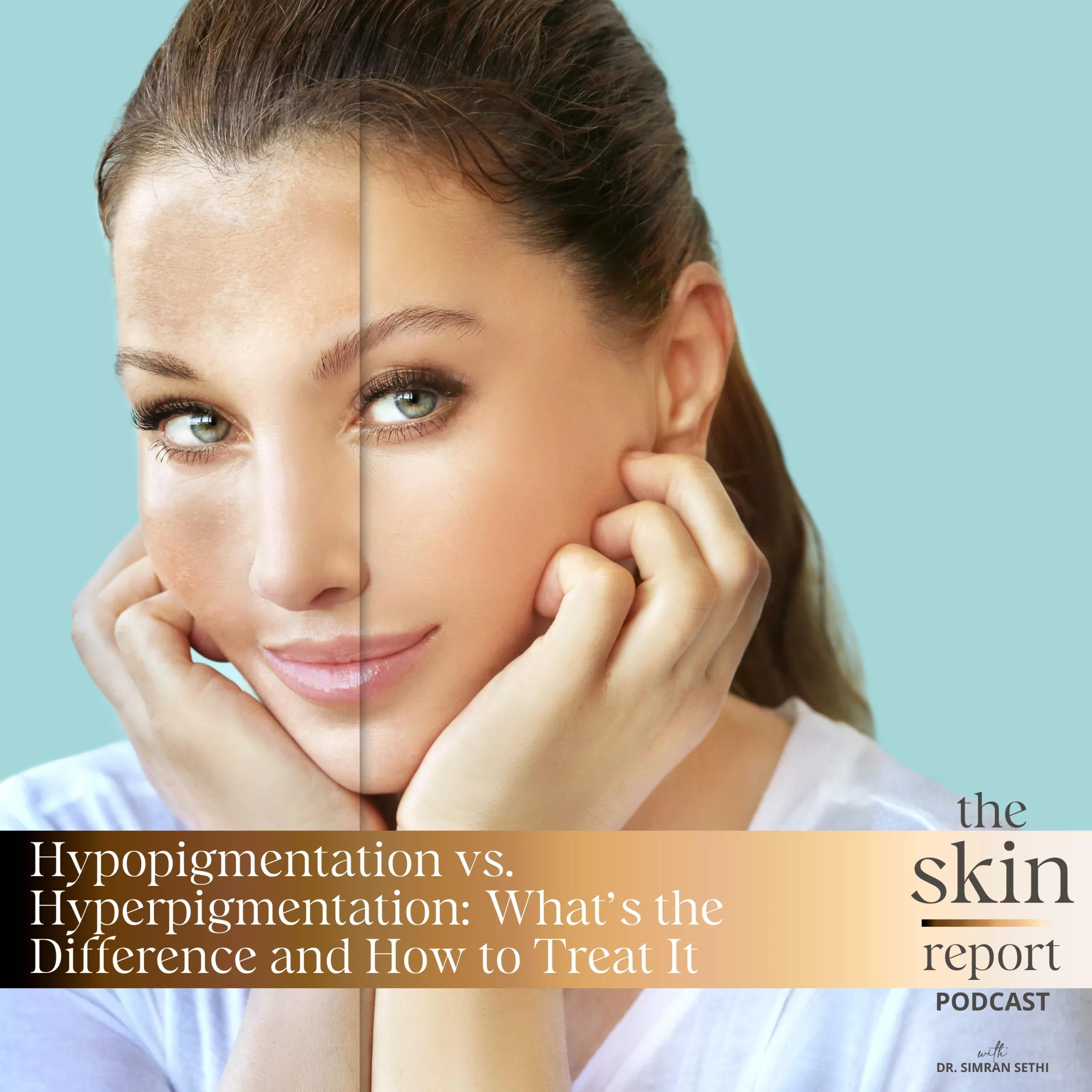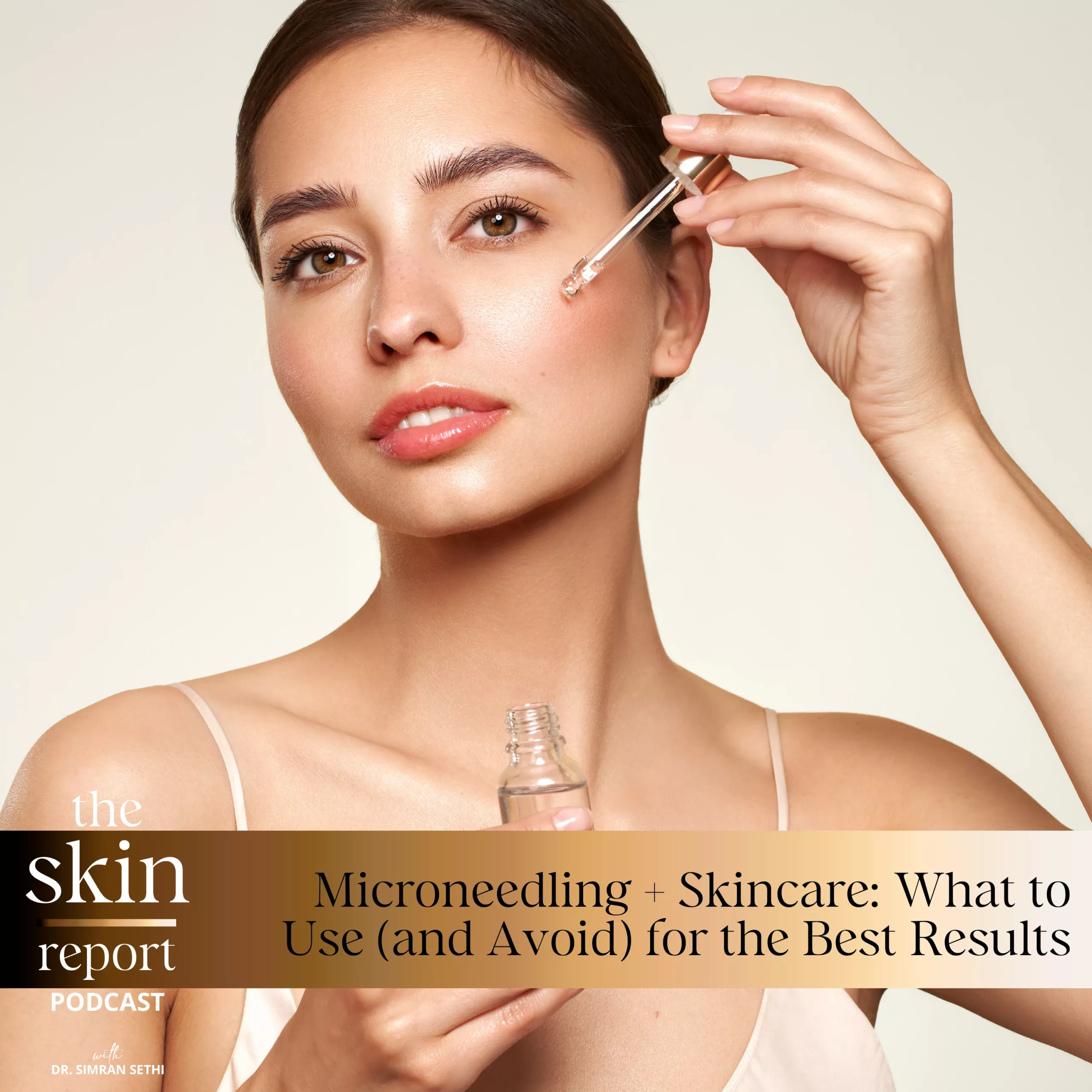Electrolysis Hair Removal
Every person deserves to feel beautiful in their skin. For people with unwanted hair growth, hair removal practices can help them feel confident and comfortable with their bodies, and hair removal methods are an important part of gender-affirming care. Whether someone has a medical condition like PCOS, is experiencing hormonal changes, or is a member of the transgender community, electrolysis is an effective option for people of all skin tones who want a safe and permanent fix for their unwanted hair growth.
The Skin Report is a podcast created to educate listeners on methods to improve skin health for people of all ethnicities and ages. On this episode, host Dr. Sethi interviews Nicole of Nicole’s Electrolysis, located within RenewMD Beauty and Wellness Medical Spa, which provides professional and personalized electrolysis services for all hair and skin types. Electrolysis is a method of FDA-approved permanent hair removal with safe and effective results. Nicole is an expert in electrolysis and gender-affirming hair removal practices, and together they cover what electrolysis is, how it works, and what information you should know if you’re interested in trying this treatment. Nicole also discusses her journey with electrolysis and shares her insights on the significance of hair removal for people who are transitioning.
As the founder of RenewMD Beauty Medical Spas and a woman of color, Dr. Sethi knows the importance of using safe and effective methods for your hair and skin. So expand your skincare knowledge by tuning in to this informative episode! This episode is the first installment of the two-part interview series with Nicole, so check back next week for the following episode, which will provide a deep discussion on gender-affirming care and hair removal!
Follow and DM a question for Dr. Sethi to answer on The Skin Report Podcast:
Renew Beauty Instagram:
https://www.instagram.com/renewmd_beauty/
RenewMD Beauty Medical Spas, California:
https://renewmdwellness.com/
Dr. Sethi on TikTok:
@SkinByDr.Sethi
Skin Cycling Duo Special Offer 20% off Promo Code:
SKINREPORT20
Nicole’s Electrolysis:
https://www.nicoleselectrolysis.com/
Hair Free Life – Electrolysis Hair Removal:
https://hairfreelife.com/electrolysis_hair_removal_guidebook/#:~:text=With%20an%2080%20percent%20success,%22permanent%22%20by%20the%20FDA
JAMA Network – Association Between Gender-Affirming Hair Removal and Mental Health Outcomes:
https://jamanetwork.com/journals/jamadermatology/fullarticle/2782063
This transcript was exported on June 7, 2023 -view latest version here.
Skincare can sometimes feel overwhelming, whether it’s finding the right products, ingredients, or treatments. There’s a lot out there, but not always for people of African, Hispanic, Middle Eastern, and East and South Asian descent. That’s why I set out to educate myself and others, so that we can all feel beautiful in our skin. Hello, and welcome back to The Skin Report. I’m Dr. Simran Sethi, an internal medicine doctor, mom of three, and CEO and founder of Skin by Dr. Sethi, and RenewMD Medical Spas.
Today, we have a very special episode. I have an important guest with us. Nicole Bain is an electrologist in my practice. She is someone I’ve known for quite a few years now. And I’m just so inspired by Nicole’s personal journey, and the immense experience she has brought with her electrolysis practice, especially for people of color, and people who are transitioning genders. So today, we have Nicole with us, and we are going to talk about a number of topics. But first, I would like to welcome her, and ask her to give us a small intro about herself.
Hi. Thank you so much for having me. I really appreciate the opportunity. I do permanent hair removal, also known as electrolysis.
Some stats to think about, how permanent is electrolysis, really? One study found that 80% of the hairs treated through this method are killed. According to a study in the Journal of the American Academy of Dermatology, electrolysis has a success rate of approximately 93%. Therefore, the FDA considers this treatment permanent. And Nicole, for all our listeners, can you explain what electrolysis is, and then also explain how it’s different from laser hair removal?
Absolutely. So electrolysis has actually been around for over 100 years. Not a lot of people know that. And we know the effectsit has on the skin, and we know the effects it has on the hair, and how truly permanent this process can be. So essentially, electrolysis is the process of gently inserting into each hair follicle, and causing damage, permanent damage, to the hair growth cells in that follicle.
When you were describing this process of destroying the follicle, what exactly are you using to do that?
So essentially, we have a rounded metal probe which goes inside the follicle. And with a small amount of current, it creates a reaction using the moisture of the follicle. And that reaction is what kills those hair growth cells that we want to get rid of.
And when people have electrolysis, do they come in every few weeks, or any time they see hair? How does it work, in terms of timeline?
That’s actually a really great question. I get that all the time. That’s probably the number one question people ask me, is how long will this take, or how often will I be coming in? And the situation with electrolysis is that it will always be a series of treatments. And that’s just due to the nature of hair growth. So hair grows in cycles, and there’s a growth stage and a shedding stage. So essentially, most people come back weekly, and that’s so that we can catch all these new hair growth cycles coming in, because … Let’s say, last week, I might’ve not even seeing all these hairs that are coming in, because they’re on a different cycle.
And when people come in for their electrolysis, should they have shaved before they come in, or waxed, or plucked? How does the pre-electrolysis session work?
Yeah, of course. That’s another really common question people ask me all the time. I always recommend my clients to shave in between treatments, to not wax, not to pluck … Because waxing or plucking can actually cause increased hair growth, because you’re causing irritation deeper in the follicle, and that irritation brings blood supply, and often hormones. I strongly encourage people to not wax, not pluck between sessions, and to always shave.
And typically in most cases, usually around three or four days of growth is plenty for me to work with. As long as the hair is long enough for me to see it, and to grab it with a tweezer, I can treat it more effectively. And I know it is a difficult process for some people to have to grow out their hair, especially on the face, to shave … For treatment, I mean. But this is a long-term solution, a permanent solution, so it is absolutely worth it to grow that hair out, even if it might be uncomfortable for the time being.
I’m so glad that you described with good detail how the electrolysis machine, and how you, as the operator, target the hair follicle, because I think this is a good opportunity for us to go over how electrolysis is different from laser hair removal, because … Of course, laser hair removal, again, has not been around actually as long as electrolysis. It’s fairly newer, but again, both electrolysis and laser hair removal have been around for decades. The way lasers target permanent hair growth is by destroying the hair follicle also, but lasers need to see pigment in the hair follicle. And it sounds like in electrolysis, the electrolysis probe is looking for moisture in the hair follicle. Is that correct?
That’s correct. Anywhere that we have moisture, we can work. And sometimes … This is actually kind of funny, but people will say, “Oh, you need to drink water before you come in.” That’s not necessarily true, because there will always be enough moisture in the follicle for me to work.
So this is where I think a lot of people need to know that one of the other big distinctions between laser hair removal and electrolysis is the color of the hair. When your hair turns gray or white, you cannot do laser hair removal, because there isn’t any pigment for the laser to target and destroy. Electrolysis is the only solution if you’re trying to reduce or permanently destroy your gray or white hair. And some people ask me, “Well, what if I dye my hair? Can I still do laser hair removal?” No, because your hair dye isnot going to dye the root of the hair in the follicle. Nicole, are there certain hair colors that respond better to electrolysis, or does it not matter?
So actually, that’s a great question, once again. So with electrolysis, it actually is effective on all hair types, and all skin types, and all areas of the body. And with electrolysis, because it’s so specific and we’re just inserting that probe into each follicle, the color of the hair or the coarseness of the hair doesn’t matter. It’s always going to beeffective. And I’ve seen so many cases where people who have had previous laser hair removal, and they still have so many blonde hairs, white hairs, or gray hairs left over … And some of these hairs can be incredibly coarse. But luckily, with electrolysis, they don’t have to worry about those hairs, once they get treatment done.
No, that’s true. And I’ve seen women going through menopause, or getting close to menopause, will come in because they are starting to grow white hair in their upper lip or in their chin. And unfortunately, we can’t do any laser hair removal on them, because the hair is already gray. But that hair tends to be very thick, too. So is it correct that electrolysis would be, then, the best option?
Absolutely. Anytime that you have hairs that lack pigment, I would absolutely recommend having electrolysis, because there are some laser offices which … They might not even tell people that the laser isn’t working on them, and they’ll just keep doing laser sessions again and again without results. But with electrolysis, they will get those results eventually.
It is something that … Yes, you always want to hope that the laser office that you are going to is giving you the truth. But yes, there are times when people who are not candidates for laser hair removal are still getting laser hair removal treatments. In your practice, Nicole, what are the different categories of people … The different reasons of people coming in for electrolysis?
There’s a wide variety of reasons that someone wouldcome in and have electrolysis. So jumping back to laser, maybe people have had laser sessions in the past, and they weren’t effective and they still have some leftover hair. Laser and electrolysis are both effective tools. They just need to be used in theright case. So in the case of those white hairs, those gray hairs, electrolysis is that tool that you need.
You definitely see people going through menopause, like you mentioned, with those gray hairs and white hairs. And I see that all the time in my work, in my office. And electrolysis has certainly shown incredible results for those people, as well as people with hormonal conditions, such as PCOS, or polycystic ovarian syndrome. PCOS is a condition that sometimes isn’t always well-diagnosed. And I have a lot of people coming in who have PCOS, who might not have been diagnosed yet. But they have a suspicion, and they have extensive hair growth. And oftentimes, laser might not work as well on those hormonally-caused hairs. But with electrolysis and proper treatment from their medical professionals, I’ve seen incredible results in getting rid of all that hair, in their community.
Yes. That is very true. As a syndrome, it’s got such a spectrum of symptoms. And the most troubling one is increased hair growth on the face, the chest. And it can be so difficult on people, because they’re shaving or waxing very, very frequently. And when I say shaving, it’s shaving every day. And then your skin takes a beating, as well. So a lot of women with polycystic ovarian syndrome will seek help when they’ve noticed that they’re shaving every day, their skin is getting scarred, the skin has a shadow, or a darker pigmented appearance in the areas that they’re removing their hair. And you’re right, I think the combination of permanent hair reduction with electrolysis and some medications will make a huge difference, and will completely change the way their skin looks.
Yeah. Just like you said, a lot of times I see people who have been shaving, or even sometimes waxing and tweezing … People who have PCOS. And I notice some skin conditions as a result of these temporary methods that damage the skin.
Exactly. And when you assess people for electrolysis, how much of a consideration is skin tone? Can people with darker skin tones do electrolysis?
Absolutely. I know sometimes with laser … Less so nowadays, as lasers have improved, the technology’s gotten better. But with electrolysis, luckily … Electrolysis works on all types of skin, and it works effectively on all different typesof skin. And it does so without changing that skin. So the goal of electrolysis is to do permanent hair removal without any permanent changes to your skin. So we’re going to leave your skin looking flawless and smooth.
And going back to moisture, and the actual process of electrolysis, we’re actually inserting into the follicle. And most of the action of the current is inside the follicle, and not on the surface of the skin. And that’s great. That’s exactly what we want, because we don’t want any type of damage to the skin. And in most cases, effects from the treatment on the skin are mild, usually just have some mild redness, some mild irritation. And you just want to leave it be, let it heal, and the skin will heal in no time.
Is everyone who is trained in electrolysis, and all the electrolysis devices … Are they safe for all skin tones?
There’s a very broad market, very broad variety of technique out there. Some operators might be trained in certain techniques, compared to others. But at the end of the day, it’s important for consumers to be vigilant, and be cautious, and just take a look at your skin after or during your treatment, and make sure that you’re not having any type of skin changes as a result of the treatment.
We say the same thing about laser hair removal. When you are getting assessed for laser hair removal and you’re looking for a place to go to, ask them how many patients, or how frequently do they treat people with your skin tone. That’s important, because a laser device that is FDA-approved, and it’s very safe and very efficacious, will only do all those things when used by the correct operator. So the experience of the operator is important. And Nicole, I know specifically we talked about polycystic ovarian syndrome. Polycystic ovarian syndrome is very common in young women of South Asian descent. South Asian, Hispanic descent. So it’s even more important to be able to do electrolysis on them safely, because of the amount of melanin in their skin.
I would absolutely agree, that you have to be incredibly cautious, and use the proper settings when you’re working with darker skin types, because that melanin could have a chance of pigmentation from treatment. But I can promise you that when the right steps are taken and the right settings areused, your skin will not change as a result from treatment. As a side note to that, it’s also very important for the clients to take proper post-treatment care, and to avoid sun exposure, and to not scratch, or not touch the treatment area. If they followthe proper post-treatment care and the right settings are used, then their skin will look unchanged and flawless after having treatment.What should I be doing before my treatment? What is the treatment going to be like, during the session and post?
So pretty much I always have a consultation before starting treatment. And I do that to educate the clients, and walk them through the process. So usually it’s around 20, maybe 30 minutes. We just sit down and we talk about their hair concerns, and their skin concerns, any sensitivities they might have. And I sort of walk them through the process of what electrolysis will be like.
And once we start treatment, then they’ll come in, they’ll lay down on the bed. In most cases, I would be doing face work, so doing electrolysis on their face. And I’ll just do the treatment, and we’ll have a pleasant conversation as we go, in most cases. And unfortunately, there is a little bit of mild discomfort, because we’re destroying cells. We’re destroying hair growth cells. So there will be some mild discomfort during treatment, but it’s nothing intolerable. I’ve never had a problem with it. And everyone leaves the office very happy after each treatment. And once again, I see them usually the following week, and then we just continue this process until their hair issues have been resolved.
So Nicole, it doesn’t hurt. So that means you don’t have to numb before an electrolysis treatment. Is that correct?
That’s correct. In very, very rare cases have I had people need the use of topical anesthetics. Maybe in, like I said, rare cases, someone might take some Motrin before coming in. These aren’t usually something that I would recommend, because there’s a toolbox of steps that we can take to improve comfort. Anesthetics are usually towards the last part of that list. And very, very rarely have I needed to go to that area.
You’ve had electrolysis before, and we’ll get into that more. What does it feel like? So is it like a heat that you feel? Or do you feel like a little current?
That’s a great question, another thing people ask me a lot. Everyone has different sensitivities, so our pain tolerance varies person to person. We’re so different. Our bodies are so different. And like I said, in every case, it’ll never be intolerable. Working in certain areas might be a little more uncomfortable than others, like maybe the center of the upper lip, but it’s usually never an issue.Well, that’s great. You definitely debunked a myth I had about electrolysis. I always thought it’s very painful, and that people will be jumping off the bed.
No.
Maybe in the past, somebody started that rumor, or maybe the technologies have developed to not be as uncomfortable. So I’m glad that that is true. And after electrolysis, can you use products like vitamin C serums, retinol? Are there any skincare products that you shouldn’t be using?
So I always encourage people to avoid using any type of harsh products the day of their treatment. So if you’re using any type of acid, or maybe a retinol, I would perhaps just waituntil the next day. Just want to let your skin heal, give it time, and it’ll heal up in no time. Number one things are to just avoid touching it, avoid scratching it, and don’t use harsh products on it, and you will never have an issue.
Perfect. Have you ever seen anyone get scarring from electrolysis, or pigmentation?
I have actually seen cases, unfortunately, from people coming in who have had previous treatment. Most of the time, they are aware that they have some skin changes from treatment. Sometimes they might not be, if the skin changes are more mild. But unfortunately, I have seen scarring. The skin’s a little bit tougher in some areas that were treated. Maybe the worst that I’ve seen is cases where there’s hypopigmentation, essentially, where each follicle is, where treatment has been done. It’s kind of like little white dots. And that’s just a result from too much heat, too much temperature from one of the modalities, thermolysis, reaching the surface of the skin and causing that damage. And in cases like that, there is some negligence. But it’s not too common that I see severe cases like that.
Well, it’s good to know that, because if somebody is experiencing that while they’re getting electrolysis, they should know that that’s not normal, and they should be reconsidering the type of treatment they’re receiving.
Absolutely.
Can electrolysis be done in any part of the body?
Yes. So electrolysis works everywhere. And I have had electrolysis pretty much everywhere you can have electrolysis. We did it inschool. We got on the beds, and we worked on underarms, we worked on chests, we worked on face. Sometimes, people actually get their forehead, if you’re getting a hairline adjusted. Sometimes, men will get that. That area, I’ve been told, is a little moreuncomfortable, but people do have treatment there, on the hairline. So if some people might just want some minor adjustments to their forehead or their hairline, then electrolysis does work in that area. It works everywhere. And any type of electrolysis that can have been done, has been done. I’m sure of it.
And can you use electrolysis … Because laser hair removal is not a good option for adjusting or changing the hairline, and it’s also not an option for shaping your eyebrows. Can electrolysis be used to help shape eyebrows, and not have to go in for plucking or threading or waxing?
Of course. Yeah. So with electrolysis, we get to be very specific with the hairs that we take, because it’s such an art and it’s just choosing specific hairs to go. So we can shape eyebrows in a very specific and masterful way to compliment someone’s face. And we can also remove hair … Maybe on the sides of the face, like the sideburn area, if people just want just a shaping adjustment. Whereas laser, it hits such a broad area that you can’t be very specific with it.
No, that’s exactly true. Lasers are not great ways to shape things, or hairlines. And so using it on the eyebrows, or on the hairline … Lasers, like you said, they deliver energy very broadly. So when you wantmore precise hair destruction, or hair removal, then it sounds like electrolysis is definitely the way to go.
Yeah. And in some cases, you just want to leave certain hair. If someone has a very natural, kind of earthy-looking eyebrow, then you can leave it like that, and just let it look beautiful in its own natural way.
Exactly. If you did want to work on the eyebrow closer to the eyes, it’s safe to use the electrolysis device there.
Yeah. So electrolysis was actually invented back in the 1800s, to get rid of ingrown eyelashes.
Oh my god. Really?
That’s correct.
Wow. So eyelashes. So this is like … You are literally on the lash line.
Yep. And it did so very, very well, compared to the other methods that they used to use. They used to inject carbolic acidinto the follicle. There’s a whole list of archaic forms of hair removal that weren’t quite effective, so we’re very fortunate that electrolysis came along.
No, definitely what you’re describing sounds archaic and … But wow. I did not actually realize that electrolysis had been around for that long. I was thinking of it being around for three or four decades. So no, I’m glad you made us aware of that.
If you’d like to learn more about science backed skincare or medical aesthetic treatments, please subscribe to and turn on notifications for The Skin Report, so you always know when a new episode is up. We have a newsletter that you can sign up for on skinbydrsethi.com, so that you can stay up to date on all our latest products and more. Additionally, if you have a skincare question, or want to make an episode topic recommendation, please message me at theskinreportbydrsethi.com, which is linked in my show notes, and I’ll be sure to answer your question in an episode soon. We’ve received some great questions so far, and I’ll try and answer them at the end of every episode. So keep them coming.
Transcript by Rev.com


